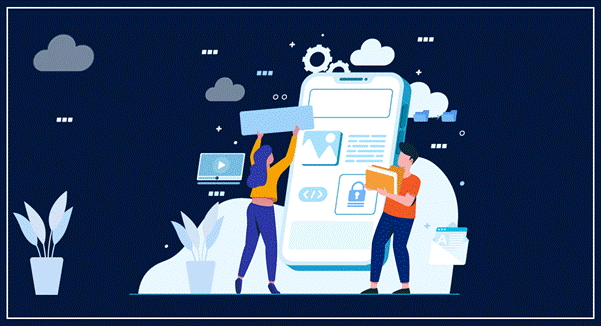Healthcare CRM platforms manage patient data, schedule appointments, improve communication, and streamline care coordination. They serve hospitals, clinics, and other healthcare providers by organizing records in a central database. This arrangement helps staff make informed decisions, cut administrative burdens, and focus more on patient well-being.
In this article, we explore the core functions of healthcare CRM, outline its advantages, address potential drawbacks, and offer practical steps to implement it. We also include real user reviews and common questions.
What Is Healthcare CRM?
A healthcare CRM (Customer Relationship Management system) is a software tool designed to record, store, and manage interactions between medical teams and patients. It unifies data from various points such as online registrations, phone calls, electronic health records, and billing transactions. Staff can then track communications and resolve concerns promptly. Many healthcare CRMs also connect with appointment systems, telemedicine solutions, or lab portals.
Key Functions:
- Patient Records Management – Consolidates personal details, visit histories, and insurance data.
- Appointment Scheduling – Automates patient reminders and syncs calendars to reduce no-shows.
- Communication Tools – Sends updates via email or text, reducing time spent calling or mailing.
- Data Analysis – Tracks trends like repeat appointments or referral sources.
- Follow-Up Coordination – Makes post-discharge care easier by sending check-up alerts or wellness tips.
By centralizing these tasks, healthcare CRM systems promote efficiency. Administrators see fewer scheduling errors, care teams spend less time searching for data, and patients enjoy clearer, more personalized support.
Why Healthcare Providers Use CRM
Modern healthcare settings handle large volumes of data and numerous interactions. A CRM assists by creating a single source of truth for staff and patients. Below are the major benefits:
- Patient-Centric Care: Detailed histories allow providers to address individual needs quickly.
- Reduced Paperwork: Automated processes replace manual logs, freeing team members to focus on patient engagement.
- Streamlined Billing: Some systems integrate with billing modules, speeding up claims or co-pay collections.
- Better Communication: Automated reminders and secure messaging lead to fewer missed appointments and fewer misunderstandings.
- Scalable Growth: As a facility grows, it can rely on a CRM to onboard more patients and handle diverse treatments without chaos.
By using data-driven insights, hospitals pinpoint bottlenecks, measure performance, and explore service improvements. Teams may analyze how quickly they respond to patient calls, or how well they manage follow-up schedules.
Potential Drawbacks of Healthcare CRM Services
Despite bringing efficiency, healthcare CRM platforms come with drawbacks that potential adopters should weigh:
- Cost Concerns
- Explanation: High-end features or extra modules may be expensive to license or maintain.
- Outcome: Smaller clinics might find it difficult to afford comprehensive solutions.
- Data Security Risks
- Explanation: Handling sensitive patient details requires strict encryption and robust user controls.
- Outcome: A single breach could harm patient privacy and a provider’s reputation.
- Complex Integration
- Explanation: Legacy software or older scheduling tools may not merge smoothly with a modern CRM.
- Outcome: Facilities might need custom connectors, which raises both costs and setup time.
- Staff Learning Curve
- Explanation: New workflows require training for front-desk workers, nurses, or administrators.
- Outcome: Productivity could dip temporarily during the adjustment period.
- Vendor Lock-In
- Explanation: Some solutions rely on proprietary features. Switching providers later can demand extensive migration and retraining.
- Outcome: The organization may stay locked to a single vendor, limiting future flexibility.
Providers can often address these points with strong project planning, budgeting, staff readiness, and a clear sense of system requirements.
Implementation Steps
Organizations that want to adopt a healthcare CRM should follow a methodical plan to reduce confusion and ensure smooth integration:
- Define Goals: Identify the top problems you aim to fix, like scheduling inefficiencies or incomplete patient records.
- Evaluate Tools: Compare software solutions in terms of cost, features, and user feedback.
- Data Cleanup: Remove duplicate or outdated records so the CRM starts with accurate data.
- Integration Mapping: Outline which systems—billing, scheduling, EHRs—must connect to the CRM.
- Pilot Launch: Test the new tool in a single department or a small unit to evaluate performance.
- Staff Training: Provide hands-on demonstrations, quick-reference guides, and ongoing support.
- Monitor and Adjust: Measure benefits like reduced wait times or improved patient follow-ups, then refine your workflows accordingly.
This sequence helps facilities confirm that the CRM matches real-world conditions before a full rollout. Early wins also build staff support for broader adoption.
People Are Always Asking
“Do smaller practices benefit from healthcare CRM?”
Yes. Even a modest clinic can cut administrative chores by automating reminders and tracking patient details in one place. Smaller setups typically invest in cost-effective or modular CRM options.
“What about privacy regulations?”
Healthcare CRMs often meet data protection standards through encryption, role-based access, and regular security updates. Organizations still need to maintain compliance with rules like HIPAA or GDPR by defining who can see each type of record.
“Does a CRM replace EHR systems?”
Not exactly. EHRs store clinical data and medical histories, while CRMs handle patient relationships, scheduling, and communication. Many healthcare CRMs can sync data from an EHR to deliver a full view of each patient’s journey.
User Reviews
- Small Regional Clinic
“We used to juggle multiple spreadsheets for patient tracking. Our new CRM organizes all essential data in one spot. Appointment attendance improved, though staff needed time to learn the interface.” - Large Hospital Network
“We integrated a CRM to track patient referrals and follow-up visits. It flags those who might skip appointments. We’re more proactive now, but linking older billing software took longer than expected.” - Telehealth Provider
“Our CRM helps schedule video sessions and send reminders. Data updates across devices, so our teams see immediate changes. The only drawback: advanced modules cost extra, so we had to set priorities.”
These accounts reveal how a properly selected CRM can eliminate wasteful tasks, despite challenges with budget or integration demands.
Frequently Asked Questions (F&Q)
- How secure is cloud-based hosting for healthcare CRM?
- Leading vendors use encryption, backups, and routine security audits. However, organizations must enforce internal policies such as strict passwords and role-based permissions.
- Can we customize a CRM to fit unique workflows?
- Yes. Many systems allow custom fields, automated alerts, or specialized dashboards. These extras can demand more time or budget, so plan accordingly.
- Is staff training mandatory?
- Yes. Without proper guidance, employees might only use a fraction of the CRM’s capabilities. Training sessions keep everyone up to speed.
- How do we measure ROI?
- Monitor changes like reduced missed appointments, faster billing cycles, and higher patient satisfaction scores.
- Does the CRM handle marketing tasks?
- Some healthcare CRMs include marketing modules for targeted campaigns. They use patient segments or condition-based outreach. This can boost preventive care participation.
Explore More About Healthcare CRM
For additional information on selecting a tool, see this detailed article. It covers features, vendor comparisons, and steps to tailor software to your specific environment.
Final Thoughts
Healthcare CRM technology centralizes communications, organizes key data, and streamlines daily workflows for hospitals, clinics, and related providers. These solutions bring clarity, assist with scheduling, and help teams collaborate around patient needs. Although challenges exist—such as data security, steep setup fees, and the integration of outdated systems—most institutions find clear benefits when they plan thoroughly and train staff effectively.
By clarifying target objectives, evaluating system features, and following a structured rollout, healthcare groups can adopt a CRM that enhances patient engagement and improves operational consistency. Over time, gains in appointment management, billing accuracy, and consistent communication often lead to a better care experience for everyone involved.









